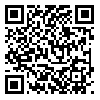Thu, Jul 17, 2025
[Archive]
Volume 3, Issue 1 (April 2007)
IJEEE 2007, 3(1): 1-9 |
Back to browse issues page
Download citation:
BibTeX | RIS | EndNote | Medlars | ProCite | Reference Manager | RefWorks
Send citation to:



BibTeX | RIS | EndNote | Medlars | ProCite | Reference Manager | RefWorks
Send citation to:
A. Badri, S. Jadid, M. Parsa-Moghaddam. Impact of Participants’ Market Power and Transmission Constraints on GenCos’ Nash Equilibrium Point. IJEEE 2007; 3 (1) :1-9
URL: http://ijeee.iust.ac.ir/article-1-22-en.html
URL: http://ijeee.iust.ac.ir/article-1-22-en.html
Abstract: (16643 Views)
Unlike perfect competitive markets, in oligopoly electricity markets due to
strategic producers and transmission constraints GenCos may increase their own profit
through strategic biddings. This paper investigates the problem of developing optimal
bidding strategies of GenCos considering participants’ market power and transmission
constraints. The problem is modeled as a bi-level optimization that at the first level each
GenCo maximizes its payoff through strategic bidding and at the second level, in order to
consider transmission constraints a system dispatch is accomplished through an OPF
problem. The AC power flow model is used for proposed OPF. Here it is assumed that each
GenCo uses linear supply function model for its bidding and has information about initial
bidding of other competitors. The impact of optimal biddings on market characteristics as
well as GenCos’ payoffs are investigated and compared with perfect competitive markets
where all the participants bid with their marginal costs. Furthermore, effects of exercising
market power due to transmission constraints as well as different biddings of strategic
generators on GenCos’ optimal bidding strategies are presented. Finally IEEE-30 bus test
system is used for case study to demonstrate simulation results.
Keywords: Bidding Strategy , Market Power , Nash Equilibrium , Oligopoly Market , Transmission Constraints
Type of Study: Research Paper |
Received: 2008/10/07 | Accepted: 2013/12/30
Received: 2008/10/07 | Accepted: 2013/12/30
| Rights and permissions | |
 |
This work is licensed under a Creative Commons Attribution-NonCommercial 4.0 International License. |







